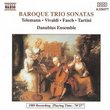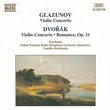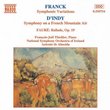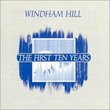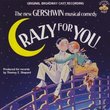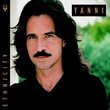| All Artists: Franz Joseph Haydn, Nicholas Ward, Northern Chamber Orchestra Title: Haydn: Symphonies Nos. 30 ("Alleluja"), 55 Members Wishing: 0 Total Copies: 0 Label: Naxos Original Release Date: 1/1/1994 Re-Release Date: 12/13/1994 Genre: Classical Styles: Historical Periods, Classical (c.1770-1830), Symphonies Number of Discs: 1 SwapaCD Credits: 1 UPC: 730099575720 |
Search - Franz Joseph Haydn, Nicholas Ward, Northern Chamber Orchestra :: Haydn: Symphonies Nos. 30 ("Alleluja"), 55
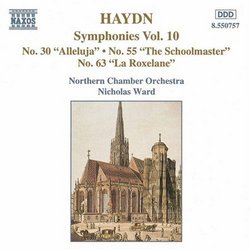 | Franz Joseph Haydn, Nicholas Ward, Northern Chamber Orchestra Haydn: Symphonies Nos. 30 ("Alleluja"), 55 Genre: Classical
|
Larger Image |
CD DetailsSimilar CDsSimilarly Requested CDs
|
CD ReviewsSymphonies to be had................ yazdanbuksh | Pune Maha. India | 10/01/2000 (5 out of 5 stars) "I'm not going to boar you with technical deatils, instead, I'm going to put it to you plain and simple. If you like Hayden's symphonies you must....no i mean you really must have this cd, Nicholas Ward has conducted them to perfection, the digital sound is crystal clear and more importantly it has a spacious felling. Unlike some recordings that sound more like baroque music than classical. My favourite is the 5th. movement which supposed to denote a school teacher in love.(Sounds funny) Well the symphonie No.55 is called,'The Schoolmaster'. To sum it up beautiful classical music even beautifully played." Exploring the Haydn Symphonies -- No. 30, 55, and 63 Robin Friedman | Washington, D.C. United States | 07/27/2004 (5 out of 5 stars) "Joseph Haydn's (1732 --1809) 104 symphonies are an inexhaustible source of delight, variety, and instruction in the art of making music. Listeners today are fortunate in having the opportunity to explore these works in depth through recordings. I find it best to explore these symphonies a few at a time in order to do justice to their inventiveness and creativity.
The CD under review is part of a budget-priced set of the complete Haydn symphonies on Naxos performed by several conductors and orchestras. The disk consists of three symphonies with popular nicknames: no. 30, the "Alleluja", no. 55 the "Schoolmaster", and no. 63 "La Roxelane" performed by the Northern Chamber Orchestra of Manchester, England under the direction of Nicholas Ward. In every respect, this CD is a joy. It consists of three excellent and varied symphonies which, to say the least, have not been subject to over-exposure. The performance is on an inspired and radiant level througout. This CD has received substantial critical acclaim, including the Penguin "Roseate" award. Finally, it was among the first of the Naxos series that I acquired when I began collecting these CDs of the Haydn symphonies some years ago. The first work on this CD, the symphony no. 30 in C major, "Alleuja," dates from 1765. It is a three-movement work and is archaic in character, somewhat like Haydn's "philosopher" symphony no. 22. The first movement, allegro, opens with a theme derived from a plainsong alleuja chant. It consists of two related themes making use of the chant and features swift, running elevated passage for the strings near the conclusion of the movement. The second movement,andante, is walking and meditative in character with the theme stated alternately by muted strings and by winds. It is a concertante movement with several lengthy solos for the flute. The final movement is a stately minuet with the opening theme in the strings and horn. Here again, the movement features an interlude with a delightful flute solo. The symphony no. 55 in E-flat major, the "Schoolmaster" dates from 1774. The first movement, allegro di molto, is in galant style with passages alternating between loud and soft and forceful and lyrical. The second movement "adagio ma semplcemente" is sometimes thought to portray the Schoolmaster in love. The movement manages to be whimsical, abstracted and tender. It consists of a theme in the upper string with a separate moving line in the lower strings. The third movement is a minuet which has as its highlight a flowing cello solo in the trio. The finale, marked presto, is brusque and lively and shows Haydn's command of orchestration with his passages for the wind quartet. The final work on this CD, the symphony no. 63, "La Roxelanne" dates from 1780. This work has some resemblances to other Haydn works, including the symphony no. 60 "Il Distratto" in that Haydn put this work together from earlier compositions he had written for the theatre. The first movement, allegro, is derived from an opera overture and includes contrasting passages for strings and winds. The second movement is taken from incidental music that Haydn wrote for a comedy about women, including a women named Roxelane. Hence, the movement is captioned "La Roxelane: Allegretto (o piu tosto allegro). The movement consists of a quiet haunting theme in the strings followed by a flute solo. The theme is embellished in the course of several variations. The minuet is given over to the strings with a delightful trio in which the oboe plays a solo over plucked strings. The final presto opens quietly, picks up with the full orchestra, and moves to a happy close. This is an outstanding CD with which to begin the exploration of the Haydn symphonies. It will offer endless enjoyment to new listeners and to lovers of early classical music." |

 Track Listings (11) - Disc #1
Track Listings (11) - Disc #1